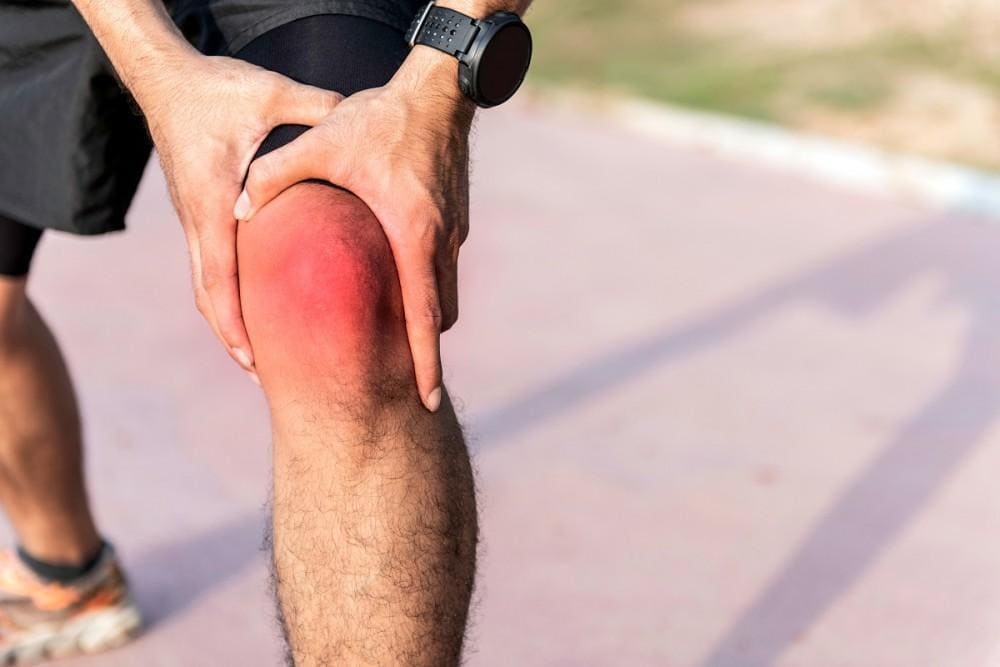Knee arthritis is a prevalent condition characterized by inflammation of the knee joint. The most common form is osteoarthritis, which occurs due to the gradual breakdown of cartilage. This leads to pain, stiffness, and reduced joint mobility. In advanced cases, damage to the cartilage may lead to knee deformities, such as knocked knees or bowlegs. This blog provides various insights about knee arthritis and how to manage it.

Types of Knee Arthritis
Understanding the various forms of knee arthritis is essential for accurate diagnosis and effective treatment tailored to each individual's specific condition. The following are the different types of knee arthritis:
Osteoarthritis (OA): It is the most common form, resulting from the gradual wear and tear of joint cartilage. It leads to pain, stiffness, and reduced joint flexibility.
Rheumatoid arthritis (RA): It is an autoimmune disorder where the immune system mistakenly attacks the joint lining, causing inflammation, pain, and potential joint deformity.
Post-traumatic arthritis: This type develops following a knee injury, such as a fracture or ligament tear. Trauma accelerates joint degeneration, contributing to arthritis.
Juvenile idiopathic arthritis (JIA): It affects children under 16 years, causing joint inflammation. Subtypes vary, impacting the knee joints and potentially leading to long-term joint damage.
Kellgren & Lawrence Grading System
The Kellgren & Lawrence classification is widely used to assess the severity of osteoarthritis, particularly in the knee joint. It categorizes the extent of joint degeneration based on radiographic findings. The classification consists of five grades:
Grade 0: No radiographic features of osteoarthritis.
Grade 1: Doubtful joint space narrowing and possible osteophytic lipping (formation of bone around joint).
Grade 2: Definite osteophytes (bone spurs), with possible joint space narrowing.
Grade 3: Moderate joint space narrowing, multiple osteophytes, and some sclerosis.
Grade 4: Severe joint space narrowing, large osteophytes, severe sclerosis, and possible deformity of the bone ends.
This classification aids healthcare professionals in determining the extent of osteoarthritic changes in the knee, guiding treatment decisions and prognosis. It is an essential tool for assessing the progression of osteoarthritis over time.
Symptoms of Knee Arthritis
Knee arthritis symptoms, varying in intensity, can significantly impact mobility and daily activities, prompting individuals to seek medical evaluation for proper diagnosis and management. The following are the various symptoms:
· Pain: Persistent discomfort, often worsening with activity
· Stiffness: Limited joint movement, especially after periods of inactivity
· Swelling: Inflammation around the knee joint, causing visible puffiness
· Weakness: Muscular atrophy due to reduced use and joint instability
· Crunching or popping sensation: Audible or palpable sensations during movement
· Reduced range of motion: Difficulty fully bending or straightening the knee
· Instability: Feeling the knee may give way or buckle
· Tenderness: Increased sensitivity to touch around the affected joint
Diagnosis of Knee Arthritis
Knee arthritis can be diagnosed by a combination of the following procedures and tests:
Medical history: Gathering a detailed medical history, including symptoms, onset, and aggravating factors, provides valuable initial insights about the condition.
Physical examination: A thorough examination assesses joint function, swelling, tenderness, and range of motion. Specific tests help identify signs indicative of arthritis.
Imaging Tests
· X-rays: Reveal joint damage, cartilage loss, and bone spurs.
· MRI (Magnetic Resonance Imaging): Provides detailed images of soft tissues, detecting early cartilage changes.
· CT Scan (Computed Tomography): Offers a three-dimensional view, aiding in complex cases.
Laboratory Tests: Blood tests, including rheumatoid factor and anti-CCP antibodies, help differentiate between osteoarthritis and inflammatory arthritis such as rheumatoid arthritis.
Joint Aspiration (Arthrocentesis): Extracting fluid from the knee helps analyse for signs of inflammation, infection, or crystals, contributing to an accurate diagnosis.
Treatment Options
If you have been diagnosed with knee arthritis, it requires a comprehensive treatment approach to manage symptoms and improve overall joint function. The treatment plan typically involves a combination of following strategies tailored to your specific condition and severity.
Medications
Non-steroidal anti-inflammatory drugs (NSAIDs): These medications help reduce pain and inflammation associated with knee arthritis.
Analgesics (Pain relievers): They are commonly used to alleviate pain without affecting inflammation.
Lifestyle Modifications
Weight management: Excess body weight places additional stress on the knee joints. Maintaining a healthy weight through diet and exercise is crucial for reducing symptoms.
Exercise: Low-impact activities like swimming and cycling help maintain joint flexibility and strengthen supporting muscles. Physical therapy programs can be tailored to address specific weaknesses and imbalances.
Assistive Devices
Braces and orthotic devices: They provide additional support to the knee joint, reducing strain and improving stability.
Canes or crutches: Assistive devices help distribute weight away from the affected knee, reducing pressure during movement.
Injections
Corticosteroid injections: When injected directly into the knee joint, corticosteroids provide short-term relief by reducing inflammation.
Hyaluronic acid injections: These injections aim to improve joint lubrication and reduce friction, enhancing mobility, particularly in case of knee osteoarthritis.
Surgical Options
Arthroscopy: This is a minimally invasive procedure, involving the insertion of a small camera into the joint. It allows for the removal of damaged tissue or debris, addressing specific joint issues.
Joint replacement: In severe cases, total or partial knee replacement may be considered. This involves replacing damaged joint surfaces with artificial components, providing long-term pain relief and improved function.
Managing Daily Activities
Joint protection: Individuals are advised to avoid activities that strain the knees, such as excessive kneeling or lifting heavy objects. Proper techniques for activities involving the knees can reduce the risk of aggravating symptoms.
Heat and cold therapy: Applying heat or cold packs to the affected knee can help alleviate stiffness, reduce inflammation, and provide temporary relief.
Emotional Well-being: Coping with knee arthritis involves addressing the emotional impact of chronic pain and limited mobility. Joining support groups, seeking counselling, or engaging in activities that promote well-being can significantly contribute to overall mental health.
Regular Follow-ups: Continuous monitoring with healthcare providers is essential. Regular check-ups allow for the assessment of disease progression and the adjustment of the treatment plan accordingly.
In conclusion, the treatment for knee arthritis is multifaceted, that requires a comprehensive approach, considering medication, lifestyle modifications, and, when necessary, surgical interventions. Consulting healthcare professionals to tailor a comprehensive plan that addresses your specific needs, improves your quality of life and maintains optimal joint function.
KM NU hospitals in Ambur, India, are well-known for their excellent treatment of arthritis knee pain and performing knee surgeries. KM NU hospitals have a team of orthopaedic specialists who make use of modern facilities, with a patient-oriented approach. They focus on pain management and surgical procedures. KM NU hospitals offer advanced and compassionate treatment for arthritis in the knee. They provide comprehensive solutions for the well-being of patients and their faster recovery.
References:
1. Arthritis of knee. American Academy of Orthopaedic Surgeons.https://orthoinfo.aaos.org/en/diseasesconditions/arthritisoftheknee/.
2. Knee Osteoarthritis. National Library of Medicine.https://www.ncbi.nlm.nih.gov/pmc/articles/PMC6179584/.
3. Knee Arthritis. John Hopkins Medicine.https://www.hopkinsmedicine.org/health/conditionsanddiseases/kneearthritis.
Author: Dr. Allen Sunny Deol.S.V
